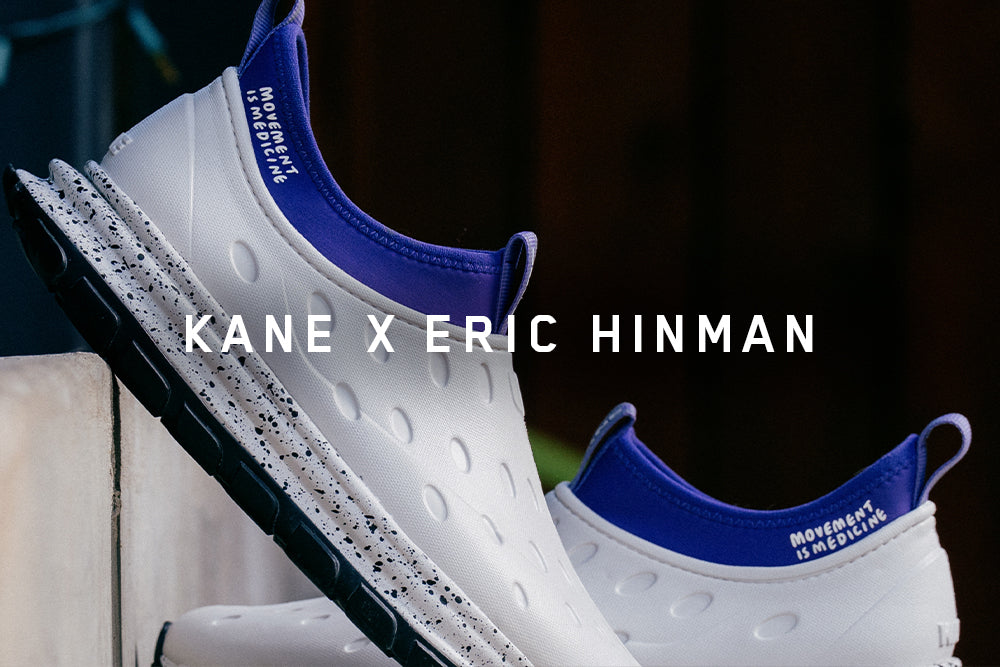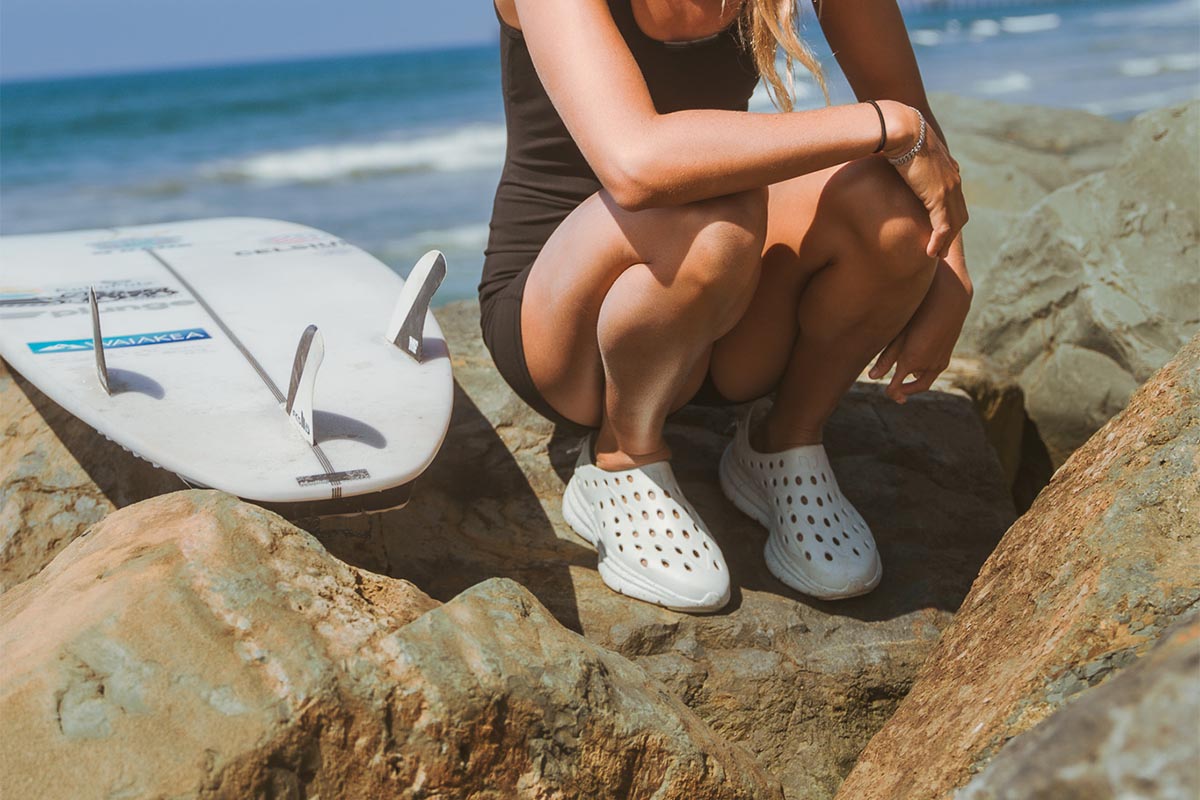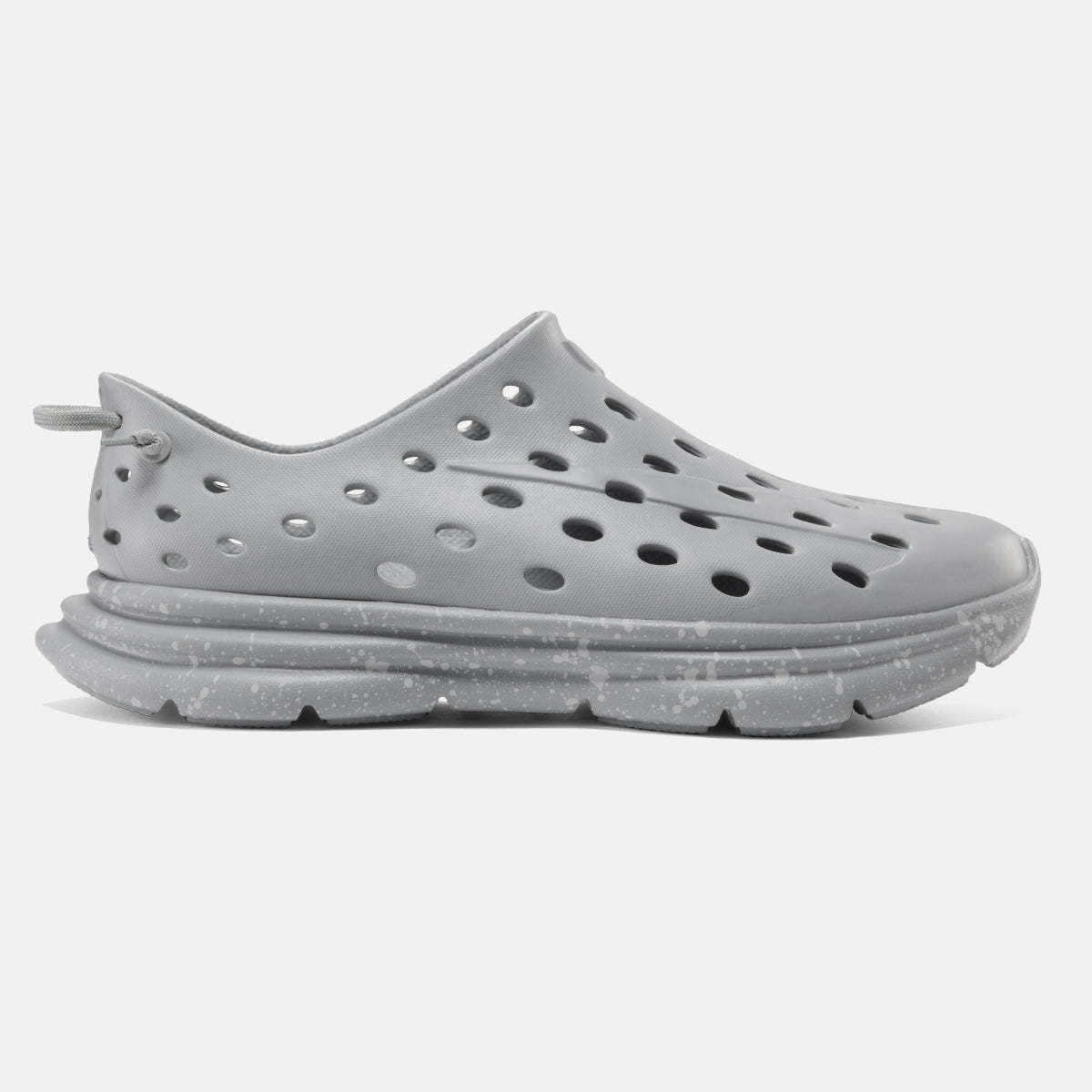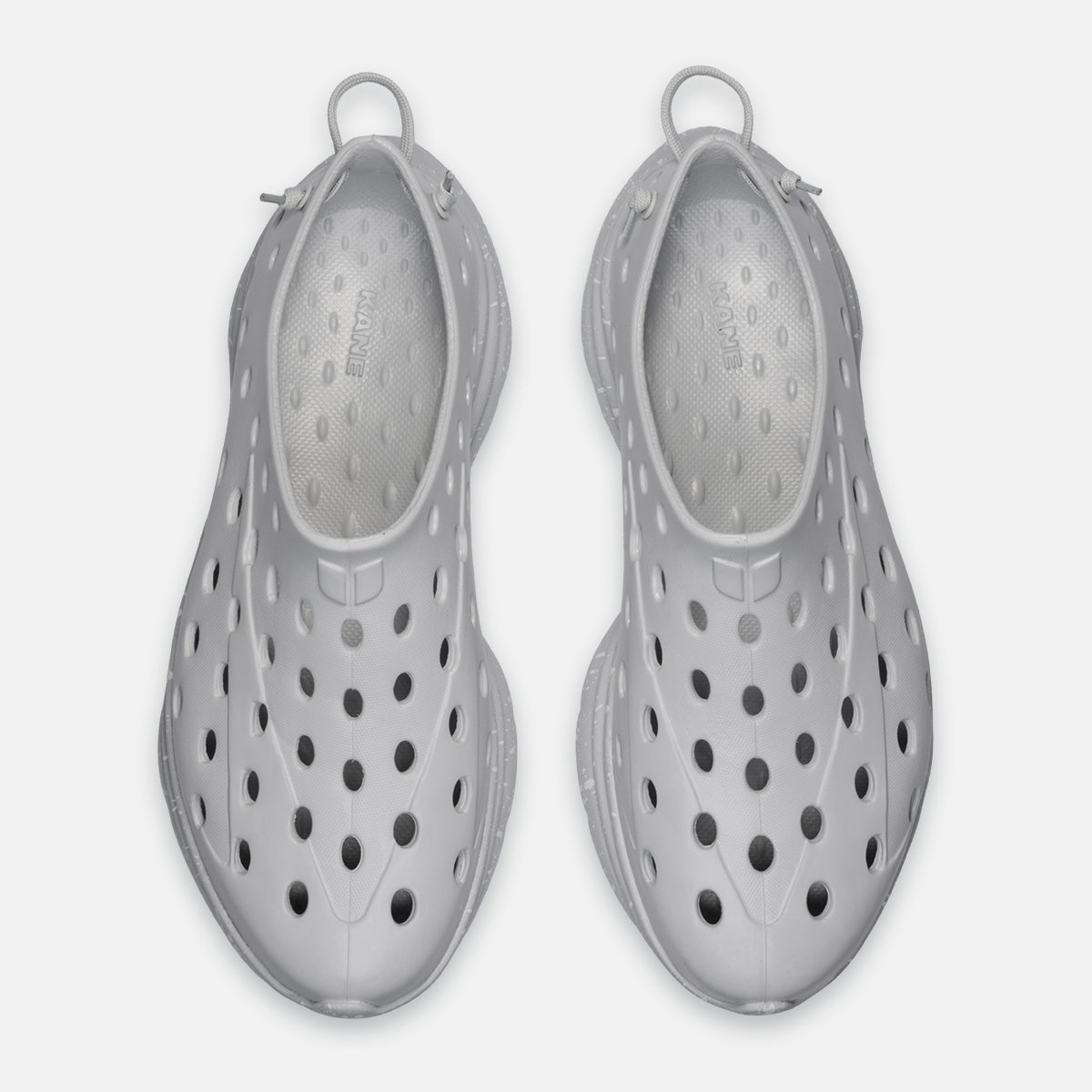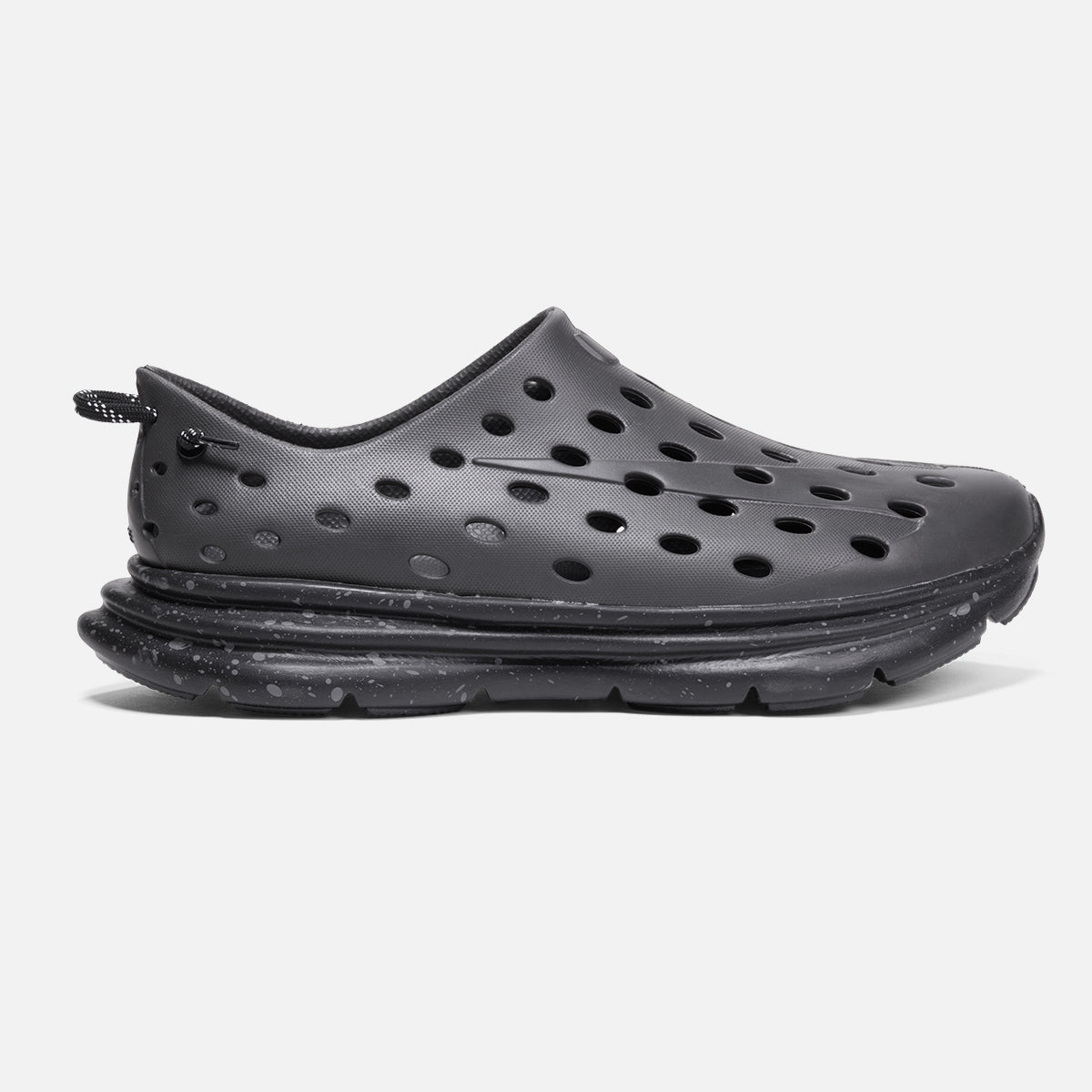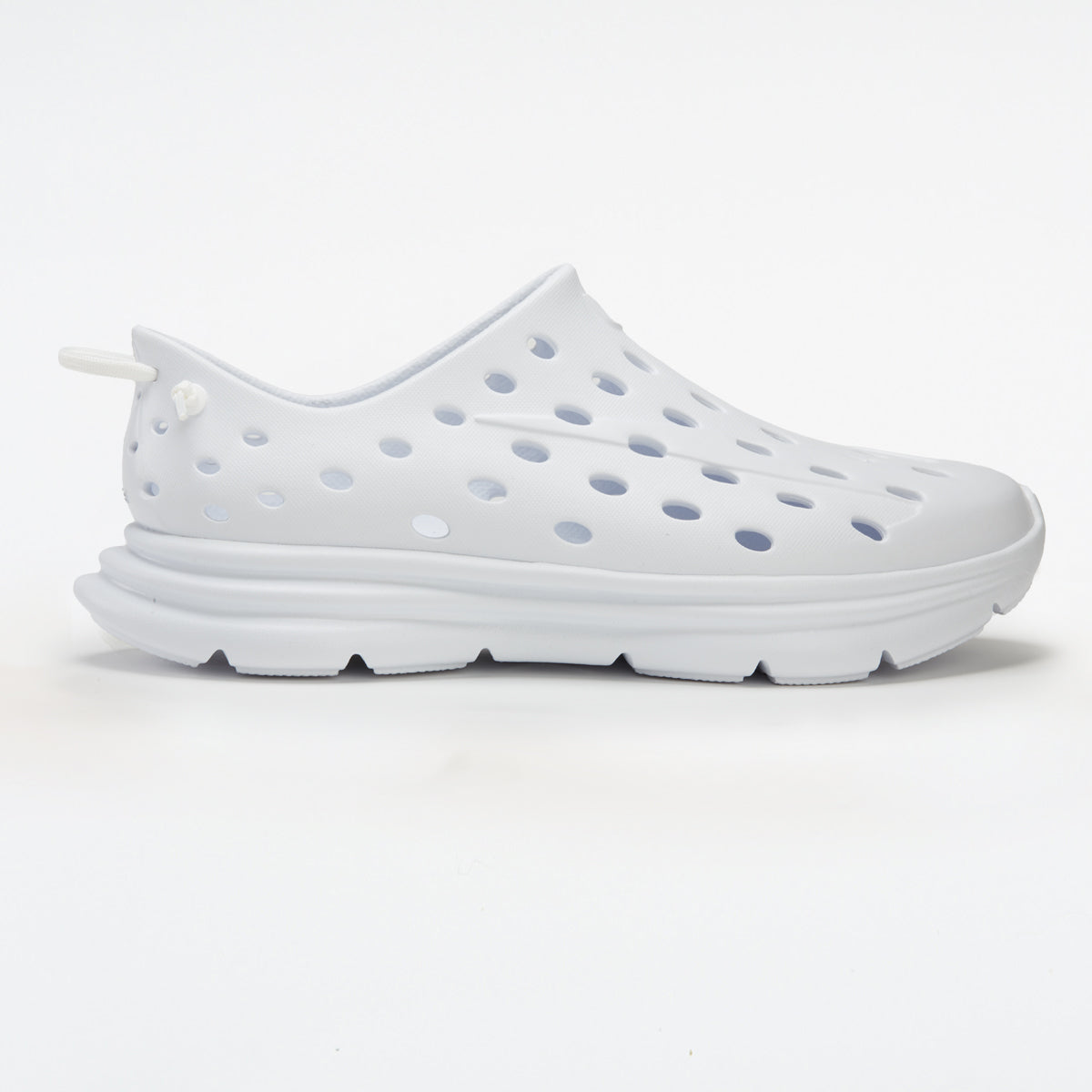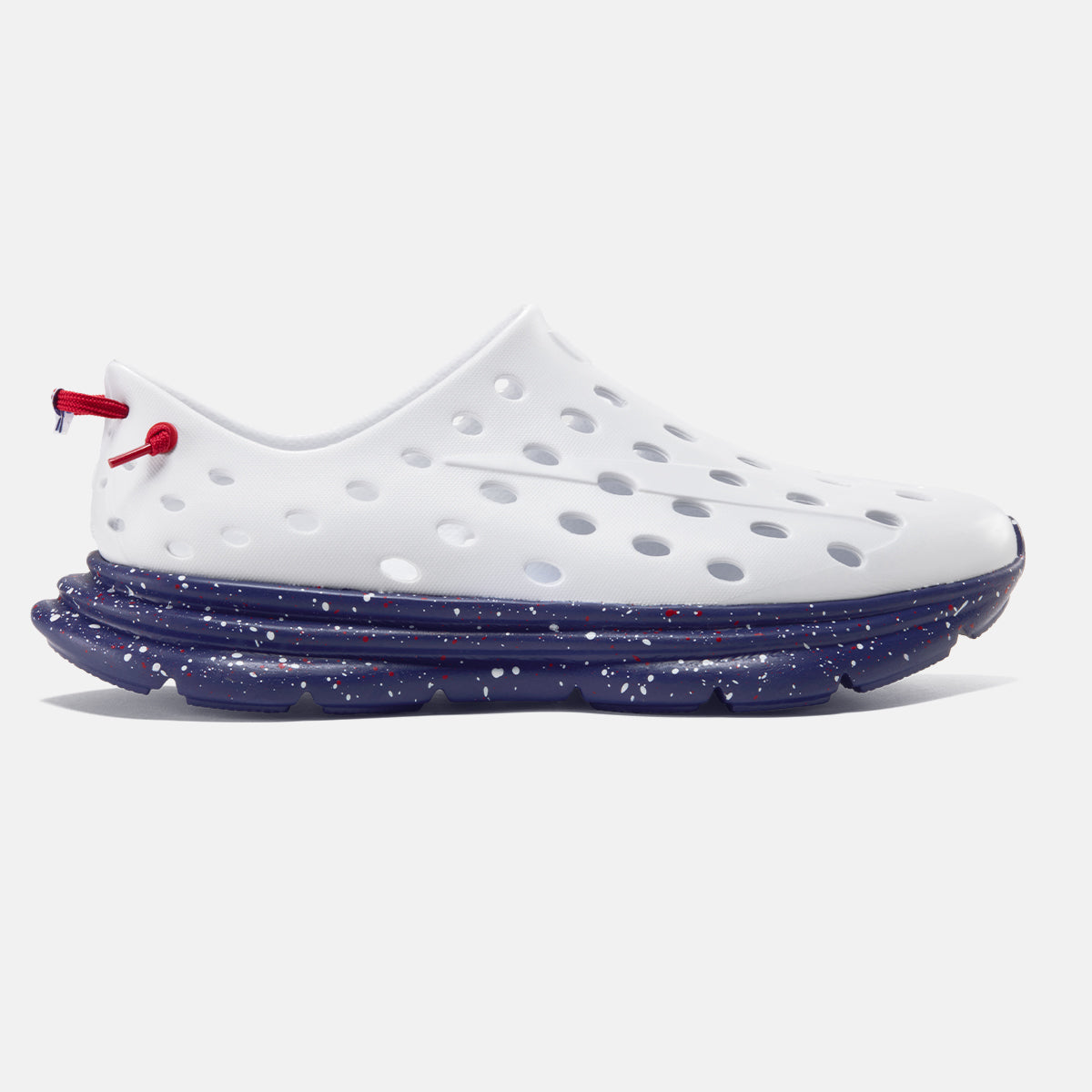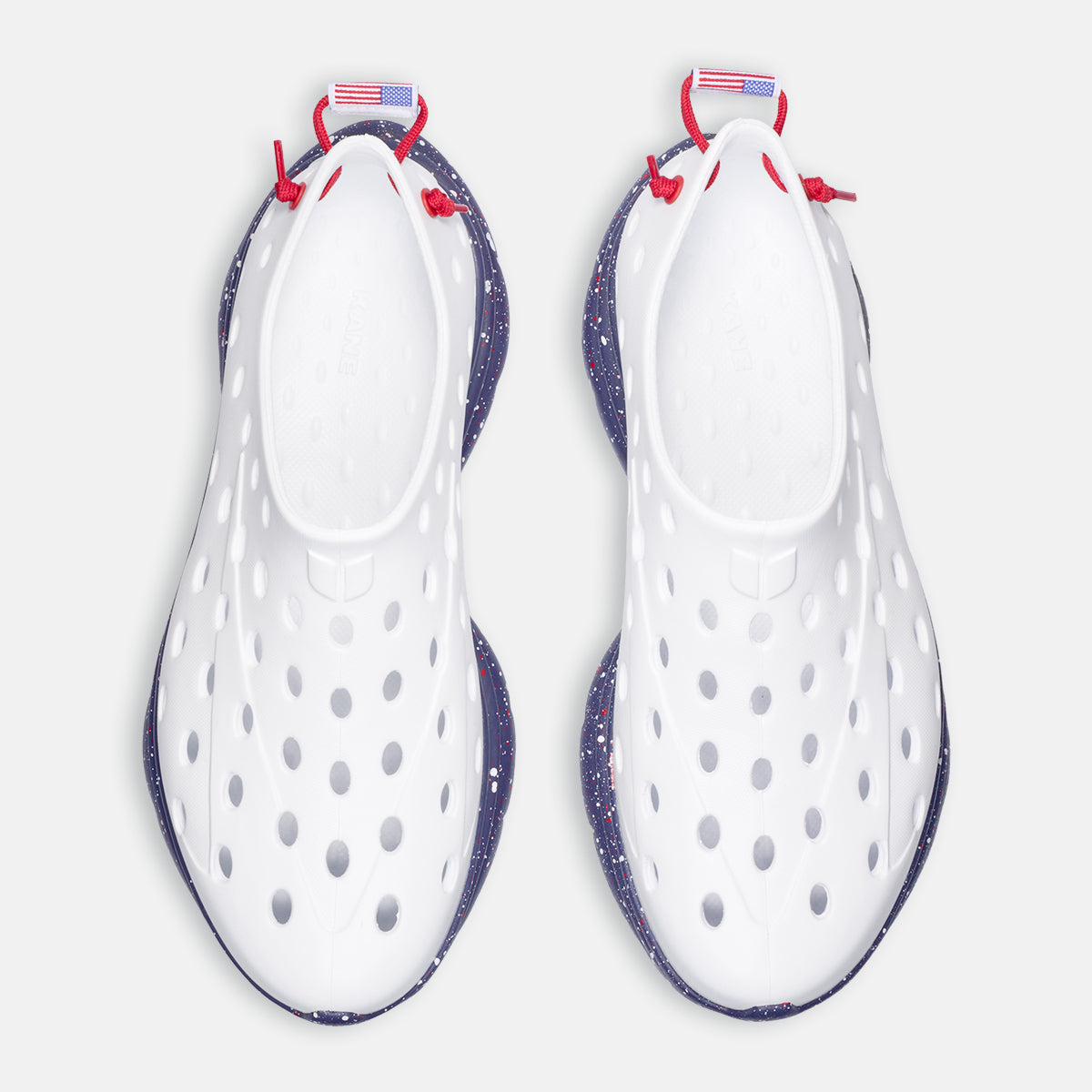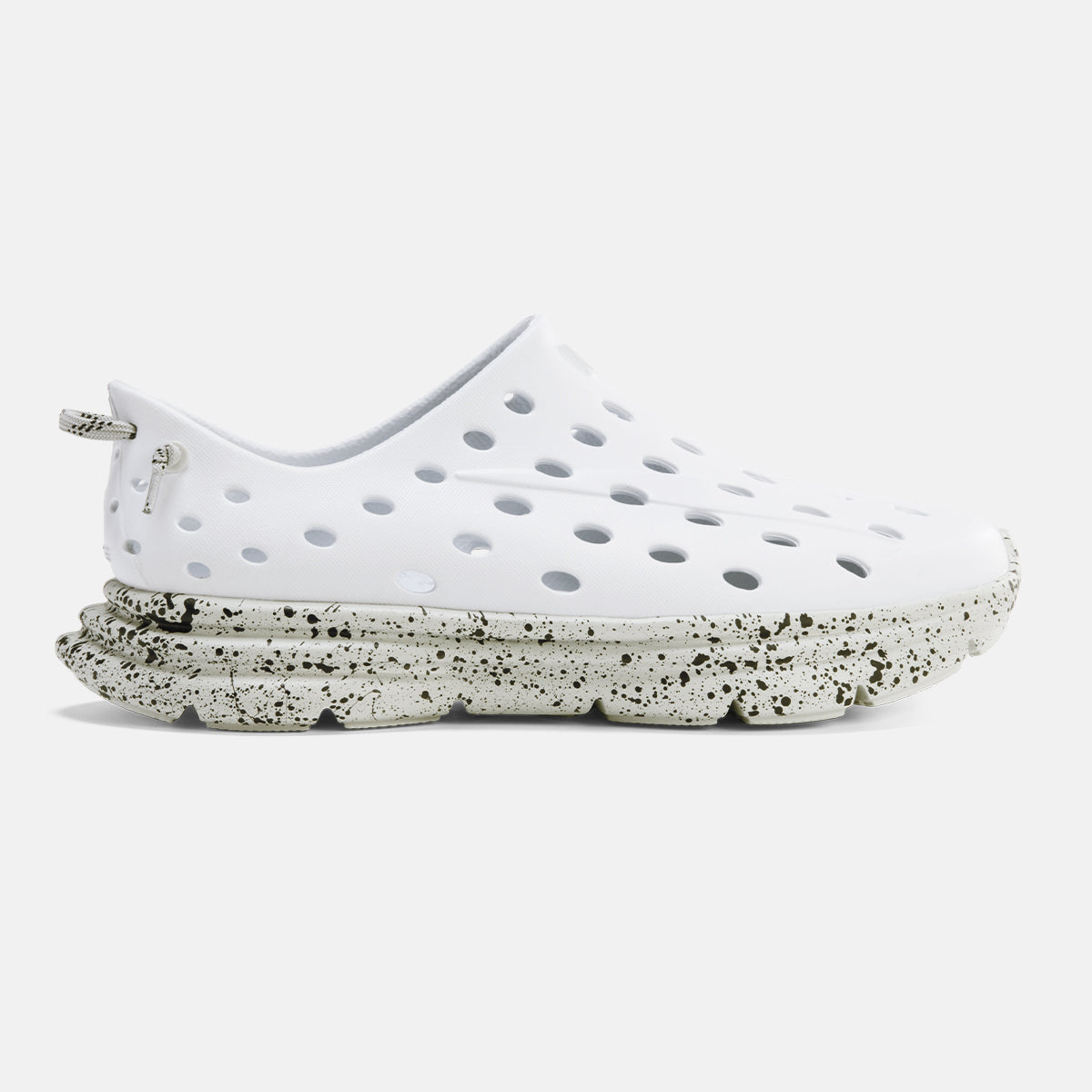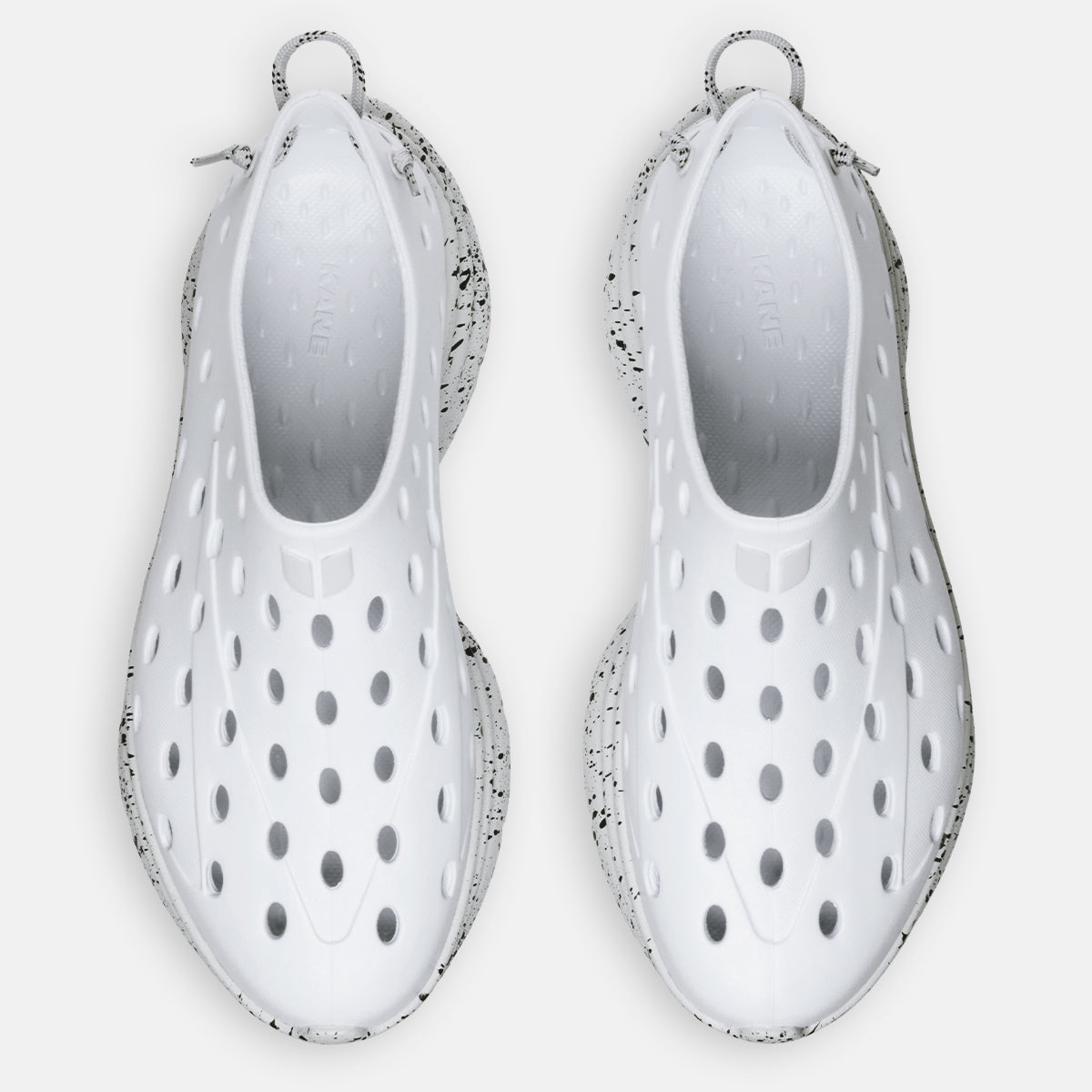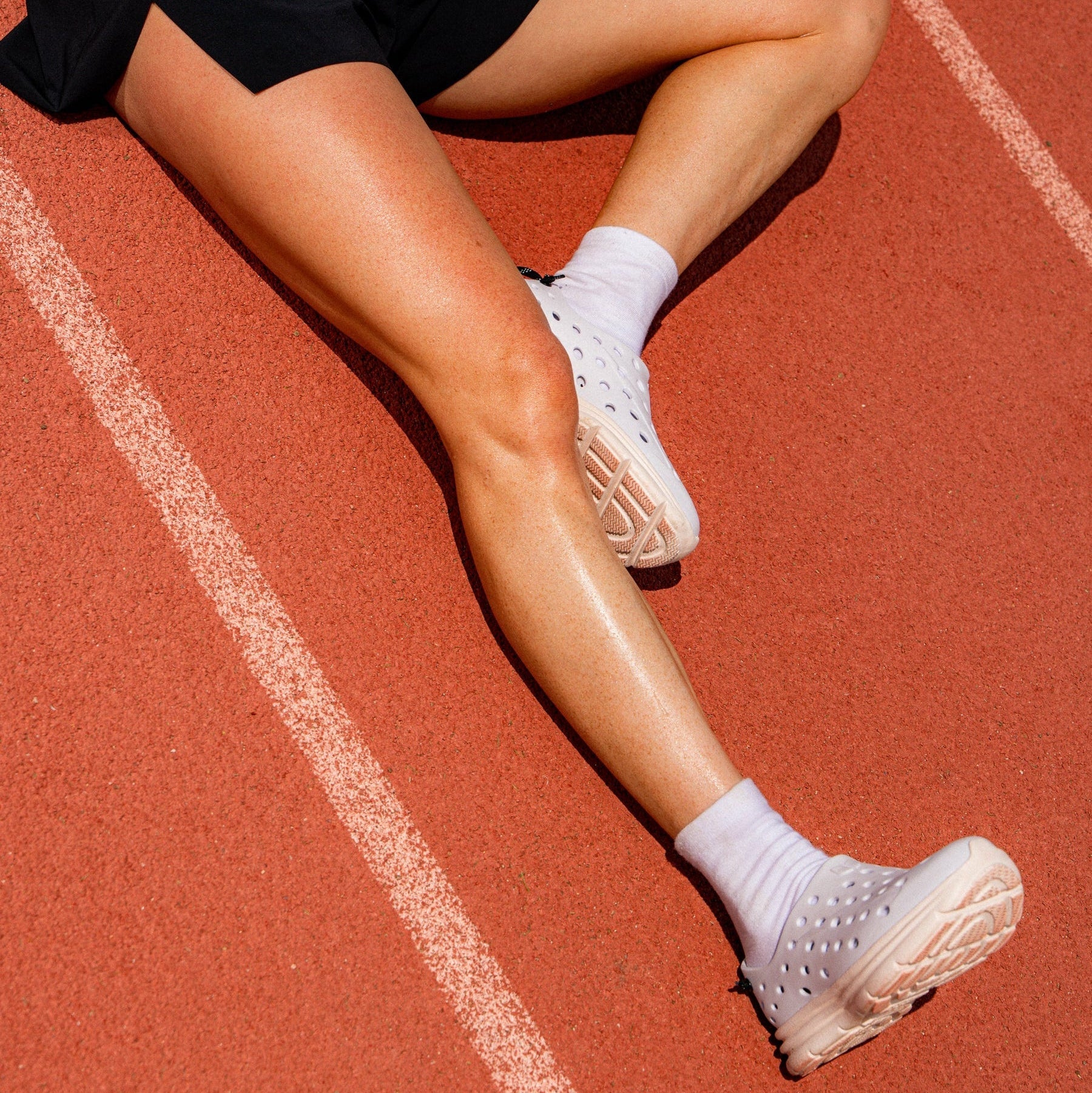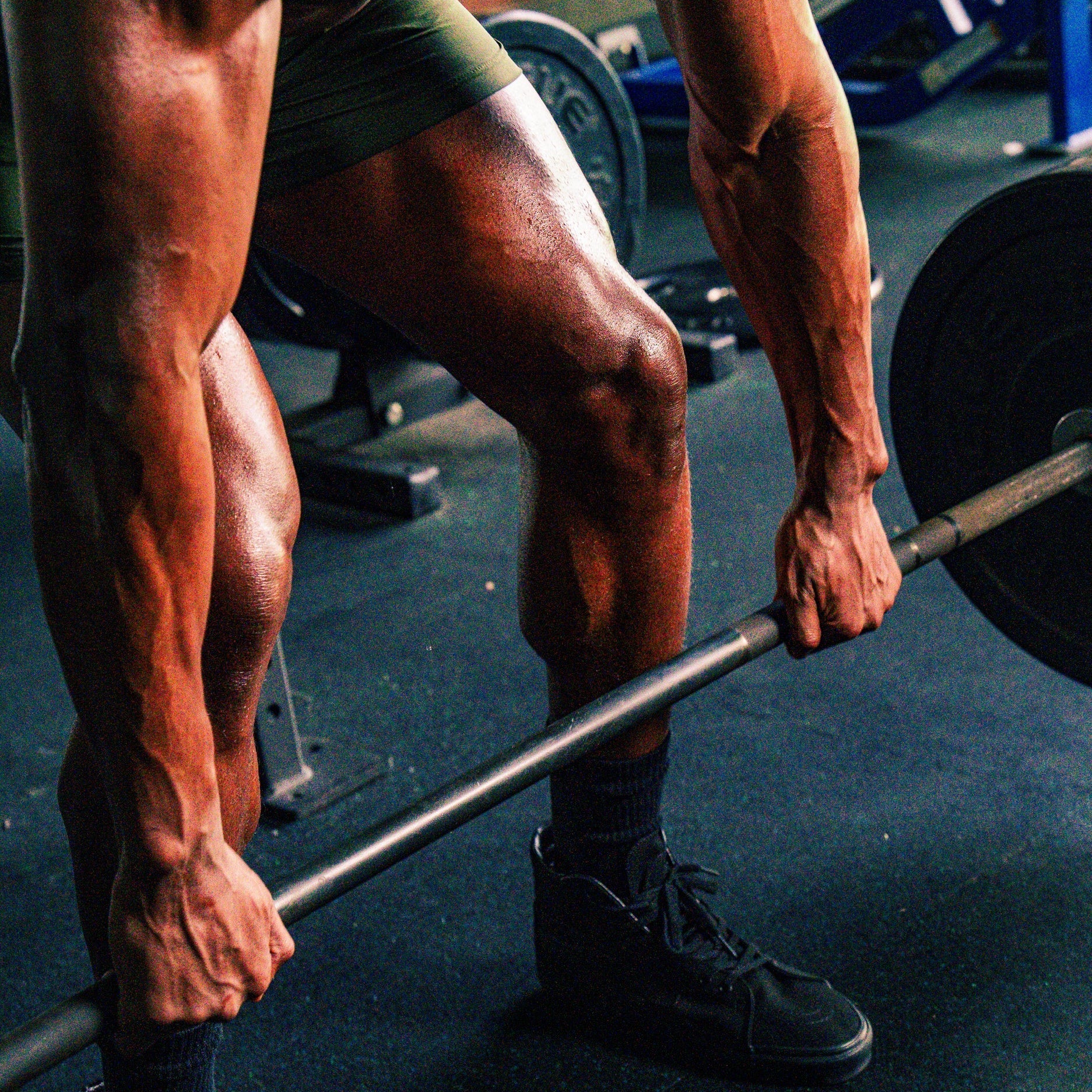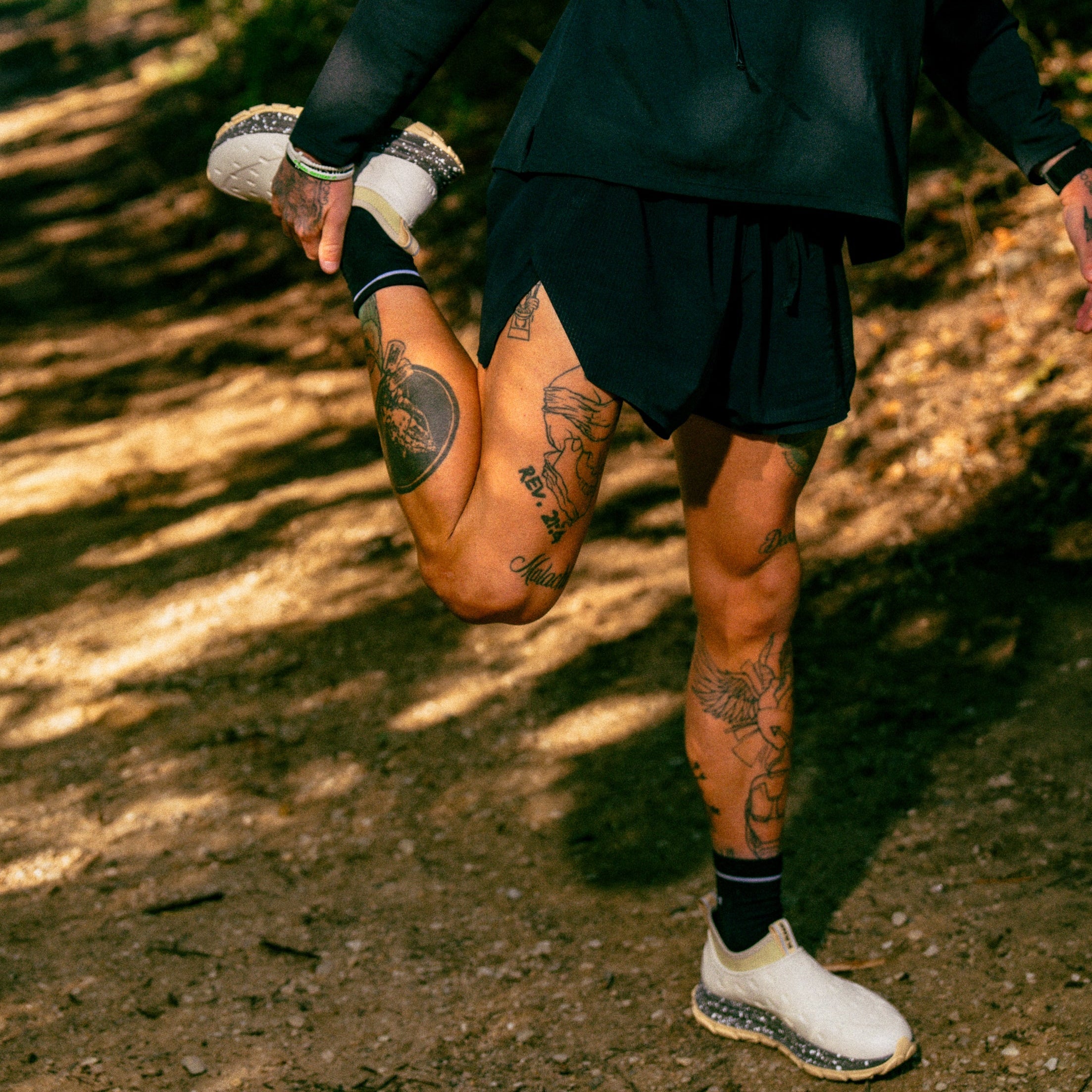If you love running, foot pain can be a real nuisance — interfering with your ability to perform at your best and adding a painful distraction to your favorite activity!
But because running involves a repetitive motion that places a lot of stress and impact on the feet, foot injuries and pain are a real risk. And because the feet are such complex limbs, they can be injured in many different ways, from your toes to your heel, your ankle to the top of the foot. In this article, we’ll focus on lateral foot pain.
What does lateral foot pain mean? Basically, it’s pain on the outside of your foot
Lateral foot pain refers to pain or discomfort that occurs on the outer side of the foot, away from the midline of the body. The causes of lateral foot pain can vary depending on the location, severity, and duration of the pain.
What can cause lateral foot pain in runners?
Some of the common causes of lateral foot pain include:
Ankle sprain
A sprained ankle occurs when one or more ligaments in the ankle joint are stretched, partially torn, or completely torn. Ligaments are tough bands of tissue that connect bones and provide stability to the joint. The ankle joint is made up of three bones: the tibia (shinbone), fibula (small bone in the lower leg), and talus (bone in the foot).
Ankle sprains are a common injury, especially among athletes and people who participate in physical activities that involve jumping, running, or quick changes of direction. They can also occur from a simple misstep or stumble while walking on uneven ground.
There are different types of ankle sprains, depending on the location and severity of the injury. The most common type is an inversion sprain, which occurs when the foot rolls inward, causing damage to the ligaments on the outer side of the ankle.
Symptoms of a sprained ankle may include:
- Pain, especially when walking or putting weight on the affected foot
- Swelling and bruising around the ankle
- Limited range of motion or stiffness in the ankle joint
- Instability or a feeling of giving way in the ankle
Stress fractures
Stress fractures are small cracks in a bone that develop gradually over time due to repetitive stress on the bone. They often occur in the bones of the foot and lower leg, which are frequently subjected to the impact and weight-bearing forces of physical activities like running, jumping, or dancing.
The most common location for a stress fracture in the foot is the metatarsal bones, which are the long bones that run from the ankle to the toes. However, stress fractures can also occur in other bones of the foot, including the cuboid bone on the outer side of the foot—resulting in lateral foot pain.
The cuboid bone helps to support the arch of the foot and provides attachment points for several muscles and tendons. When a stress fracture occurs in the cuboid bone, it can cause pain, tenderness, and swelling on the outer side of the foot. The pain may be worsened by weight-bearing activities like standing, walking, or running, and may be accompanied by a feeling of instability or weakness in the foot.
Cuboid syndrome
Cuboid syndrome is a condition that occurs when the cuboid bone, located on the outer side of the foot, becomes displaced or irritated. Cuboid syndrome typically develops as a result of repetitive stress or trauma to the foot, such as from overuse or a sudden injury like an ankle sprain. The condition can also be caused by a misalignment of the foot or ankle, which can put excessive pressure on the cuboid bone.
Symptoms of cuboid syndrome may include:
- Pain or tenderness on the outer side of the foot, near the base of the fifth metatarsal bone
- Swelling or redness around the cuboid bone
- Difficulty bearing weight on the affected foot
- A popping or clicking sensation when moving the foot
Cuboid syndrome can be diagnosed through a physical examination, which may include checking for tenderness or swelling around the cuboid bone and assessing the range of motion and stability of the foot and ankle.
Peroneal tendonitis
Peroneal tendonitis occurs when the peroneal tendons, which run down the outer side of the ankle and foot, become inflamed or irritated.
Peroneal tendonitis is typically caused by overuse or repetitive stress on the tendons, from activities including running. Uneven surfaces may further exacerbate this condition. Peroneal tendonitis can also be caused by a sudden injury or trauma, such as an ankle sprain.
Symptoms of peroneal tendonitis may include:
- Pain or tenderness on the outer side of the foot or ankle
- Swelling or warmth around the peroneal tendons
- Stiffness or limited range of motion in the foot or ankle
- A popping or snapping sensation when moving the foot or ankle
Foot bunions
Foot bunions, also known as hallux valgus, are a common foot condition that affect the joint at the base of the big toe. A bunion occurs when the big toe starts to drift towards the other toes, causing the joint at the base of the big toe to protrude outward.
Although they’re located on the inner side of the foot, foot bunions may cause a person to shift their weight to the lateral side of their feet. This can lead to abnormal pressure and stress on the other joints and bones in the foot, including those on the lateral or outer side of the foot.
Corns & Calluses
Corns and calluses are thickened areas of skin that develop on the feet. They are caused by repeated pressure or friction, such as the rubbing of feet against shoes. When they develop on the lateral side of the foot, they can cause pain and discomfort.
The two terms are often used interchangeably and can cause confusion, so let's clear up the difference:
- Corns: typically develop on the top or side of the toes
- Calluses: usually develop on the sole or ball of the foot
If left untreated, both corns and calluses can become larger and more painful over time.
In both, the thickened skin can put pressure on the surrounding tissues and nerves, causing pain and discomfort. In addition to causing pain, corns and calluses can also affect gait and posture, leading to additional pressure and stress on the lateral side of the foot.
Treatment for corns and calluses typically involves removing the thickened skin through gentle abrasion or by using special patches or pads. In some cases, your healthcare provider may recommend changes to footwear or orthotics to reduce pressure on the affected area.
Arthritis
Arthritis is a common condition that causes inflammation and pain in the joints. Arthritis can even cause pain and discomfort in the feet, including the lateral or outer side of the foot. Different types of arthritis that can affect the foot include:
- Osteoarthritis
- Rheumatoid arthritis
- Gout
Osteoarthritis is the most common form of arthritis and can best be understood as "wear and tear" arthritis. With osteoarthritis, the cartilage that cushions the joints wears away, leading to bone-on-bone contact and inflammation. Osteoarthritis can also lead to the development of bone spurs, which may cause pain and discomfort in the surrounding tissues.
Rheumatoid arthritis is an autoimmune disorder that occurs when your immune system mistakenly attacks your own body's tissues. It can damage a wide variety of body systems and can also cause deformities in the joints.
Gout is a common form of inflammatory arthritis that occurs when uric acid crystals accumulate in your joints, causing inflammation and burning pain. Gout can manifest in sudden attacks of severe pain and swelling in the joints, including those on the lateral side of the foot.
Minimize your risk factors for foot pain after running by…
If you’re a runner, it’s worth taking proactive measures to minimize your chances of injury or pain, whether it’s in the knees, hips, legs, or feet. Here are some of the best practices to help you stay in tip-top running shape:
Training gradually and wearing shoes that give adequate support
Runners can also take steps to prevent foot pain and injury by gradually increasing mileage, wearing shoes that are properly cushioned and supportive, and incorporating stretching and strengthening exercises into their routine.
Some people think tight shoes will be more supportive, but instead, you want to think about the correct running shoes for your foot type; whether you have flat feet, high arches, or feet that pronate or supinate.
Making sure your running shoe laces aren’t too tight
When tying the laces on your running shoes, make sure they are firm but not tight. Think of the feeling of a car seat belt as a reference: You want your running shoes to make you feel securely held in place but not uncomfortable.
Remembering to take rest days
Rest days allow the feet and other muscles and tissues in the body to recover and repair from the stress and impact of running. This can help to reduce inflammation and soreness, which can lead to foot pain if left unchecked. Additionally, rest days give the body time to rebuild and strengthen muscles, which can help to prevent future injury.
Taking a break from running on hard surfaces
Running on hard surfaces, such as concrete or asphalt, can cause foot pain. To minimize foot pain when running on hard surfaces, it is important to wear properly cushioned and supportive shoes that are designed for running. Runners can also try to vary their running surfaces, incorporating softer surfaces such as:
- Grass
- Dirt trails or paths
- Athletic tracks
- Treadmill
- Sand
Treatment options for lateral foot pain
If you’re unlucky to experience lateral foot pain, there are treatment options. If you’re unsure how severe the injury is, or if the pain level is high, do make a doctor’s appointment. Because the foot is so complex, there can be many explanations for what’s causing lateral foot pain. And the tests required to identify the cause can range from a physical examination/palpation to an X-ray, MRI, or Ultrasound.
Some treatments that might be recommended may include:
RICE therapy
RICE therapy is a common first-aid treatment used to help reduce pain, swelling, and inflammation following an injury or surgery. RICE stands for Rest, Ice, Compression, and Elevation.
- Rest: refers to avoiding any activities that may further aggravate the injury.
- Ice: involves applying a cold pack or ice pack to the affected area for 15-20 minutes at a time, several times a day. Ice helps to reduce pain and inflammation by constricting the blood vessels and limiting blood flow to the affected area.
- Compression: involves using a bandage or wrap to compress the affected area, which helps to reduce swelling and limit the accumulation of fluid in the tissues.
- Elevation: means keeping the affected area elevated above the level of the heart, which helps to promote drainage of fluids and reduce swelling.
Medication
The type of medication prescribed for lateral foot pain will depend on the underlying cause of the pain. Some of the most commonly prescribed medications for foot pain include:
- Nonsteroidal anti-inflammatory drugs (NSAIDs): These medications, such as ibuprofen and naproxen, can help reduce pain and inflammation in the affected area. NSAIDs may be prescribed for conditions such as plantar fasciitis, arthritis, or bursitis.
- Corticosteroids: Corticosteroids are powerful anti-inflammatory medications that can be injected directly into the affected area to reduce pain and inflammation. They may be prescribed for conditions such as plantar fasciitis, arthritis, or bursitis.
- Analgesics: These are pain-relieving medications, such as acetaminophen (Tylenol) or stronger prescription medications, that can be used to manage severe or chronic pain. They may be prescribed for conditions such as neuropathic pain or chronic plantar fasciitis.
Physical therapy
Physical therapy can be an effective way to manage lateral foot pain by addressing the underlying causes of the pain and promoting healing, flexibility, and strength in the affected area. Physical therapy may include:
- Stretching exercises: Stretches and exercises to improve flexibility and reduce tension in the affected area.
- Strengthening exercises: Exercises to strengthen the foot and ankle muscles and improve stability and balance.
- Manual therapy: Hands-on techniques like massage can improve circulation, reduce pain and inflammation, and promote healing.
- Footwear and orthotics: Physical therapy may involve recommendations for appropriate footwear and the use of custom orthotics to support the foot and reduce stress on the affected area.
Physical therapy should be done under the guidance of a licensed physical therapist and in conjunction with other treatments such as medication and lifestyle changes.
Discover Kane Recovery Shoes
The Kane Revive shoe provides superior cushioning coupled with precise biomechanics. The proprietary blend of EVA, a 10mm heel raise, and arch support ensure an easy transfer from heel to toe, allowing foot and leg muscles to recover. Check them out here.


